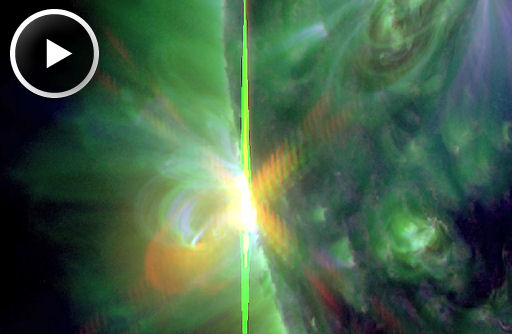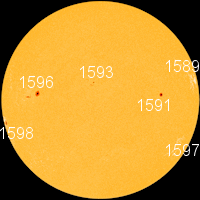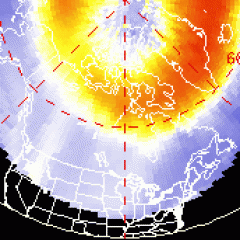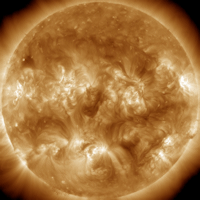~Space Weather Update~ Active Sunspot [1]
ACTIVE SUNSPOT : New sunspot AR1598 is crackling with C- and M-class [2] solar flares. One of the explosions, an M9-flare on Oct. 20th, produced a bright flash of extreme UV radiation recorded by NASA's Solar Dynamics Observatory:
Radiation from the flare sent a wave of ionization [4] rippling through Earth's upper atmosphere, temporarily disturbing the transmission of low-frequency radio signals around Europe and North America. The sunspot has also produced at least one bright CME (movie [5]), but Earth was not in the line of fire.
More flares are in the offing. NOAA forecasters estimate a 60% chance of M-flares and a 5% chance of X-flares during the next 24 hours. Solar flare alerts: text [6], voice [7].

![]()
Solar wind
speed: 364.7 km/sec
density: 0.7 protons/cm3
explanation [8] | more data [9]
Updated: Today at 1327 UT
![]()
X-ray Solar Flares
6-hr max: B9 0907 UT Oct22
24-hr: C3 0026 UT Oct22
explanation [10] | more data [11]
Updated: Today at: 1259 UT
![]()
![]()
![]()
Daily Sun: 22 Oct 12
![]()
![]()
New sunspot 1598 poses a threat for M- and X-class [2] solar flares. Credit: SDO/HMI
![]()
![]()
![]()
Sunspot number: 75
What is the sunspot number? [13]
Updated 21 Oct 2012
Spotless Days
Current Stretch: 0 days
2012 total: 0 days (0%)
2011 total: 2 days (<1%)
2010 total: 51 days (14%)
2009 total: 260 days (71%)
Since 2004: 821 days
Typical Solar Min: 486 days
Update 21 Oct 2012
The Radio Sun
10.7 cm flux: 151 sfu
explanation [14] | more data [15]
Updated 21 Oct 2012
![]()
![]()
![]()
Current Auroral Oval:
![]()
Switch to: Europe, USA, New Zealand, Antarctica
Credit: NOAA/POES
![]()
![]()
![]()
Planetary K-index
Now: Kp= 1 quiet
24-hr max: Kp= 1 quiet
explanation [17] | more data [18]
![]()
Interplanetary Mag. Field
Btotal: 4.0 nT
Bz: 0.5 nT north
explanation [19] | more data [20]
Updated: Today at 1327 UT
![]()
![]()
![]()
Coronal Holes: 21 Oct 12
![]()
![]()
There are no large coronal holes on the Earthside of the sun. Credit: SDO/AI



